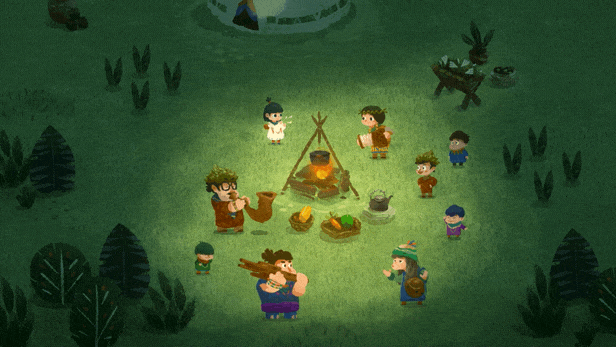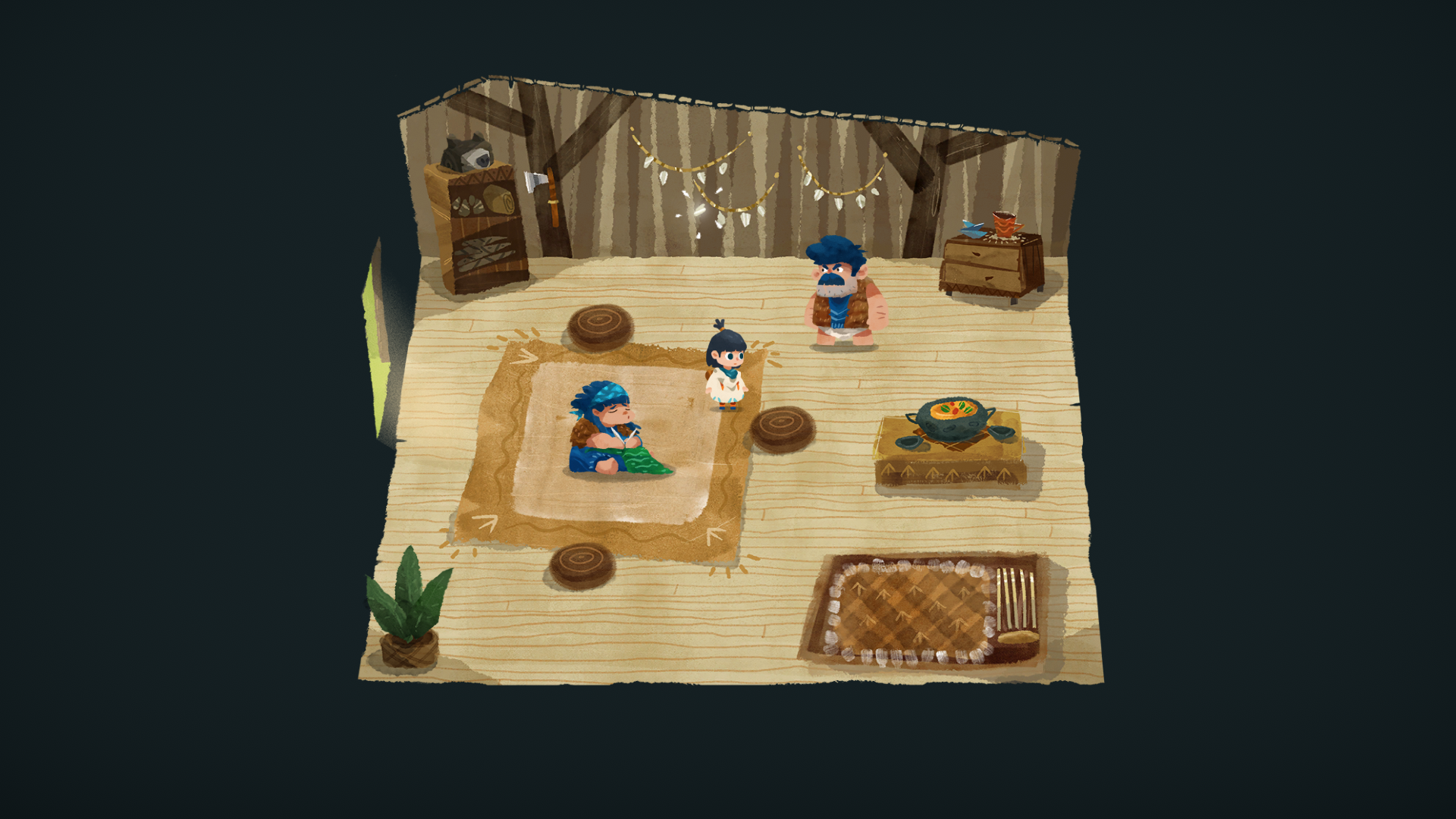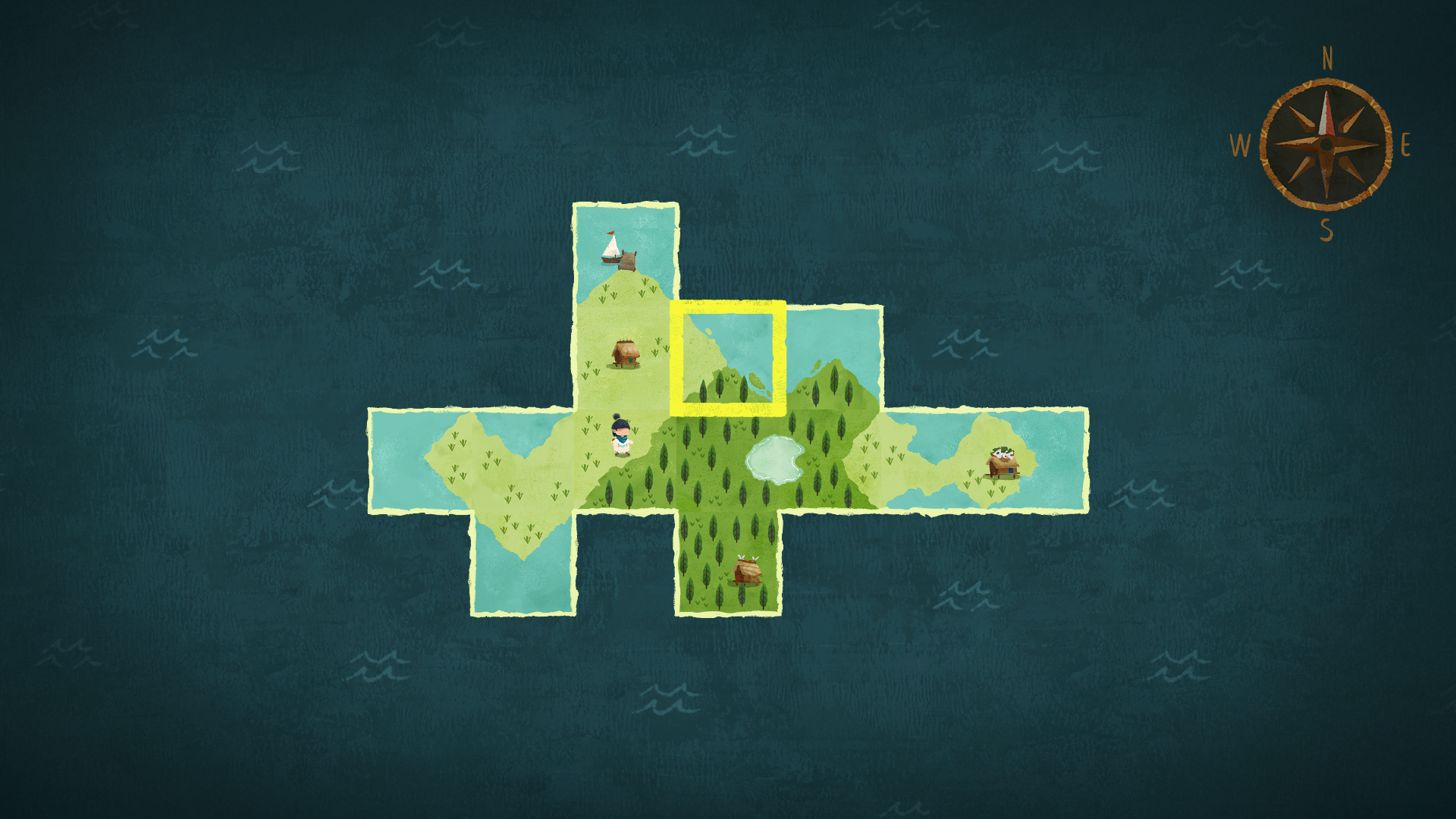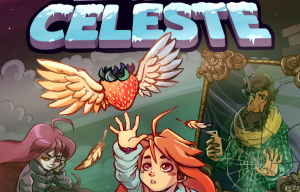Finally, my love of tile board games like Carcassonne has been revived. But it’s completely different mind you. Carto is a tile-placement puzzle released to much praise last year. My first impressions were very positive, but I set them aside until today. It’s a terrific game!
Looking for deals on used video games & accessories? I'm now selling used retro games.
Click here to go to Mr. Dave's Video Game Shop on eBay!
While it’s probably the best adjective, I’m not really fond of describing games as cute anymore, because there are so many vocabularic adjectives for a game of this caliber. Perhaps this is “clever,” “witty,” “minimalist,” “pleasant,” and “empathic.” There’s a whole slew of wonderful descriptions.
So, let me garner your attention and put the pieces together about this game.
What is Carto?
Carto is the granddaughter possibly a magical grandmother figure you see together in the opening scene aboard their cozy sky ship, floating away peacefully fathoms above the unknowing tribal islands below. It’s just enough to set the premise.
There is an accident and Carto is ejected from their skyship abode to land beached on a faceless island. She takes with her an ability from the opening scene that allows her to use a map to change the world around her. It’s an overwhelming premise, but with this skill an intriguing adventure awaits

I mentioned Carcassonne because it has a similar gameplay feature that these two games share. In both, you are given a set of tiles. The land you’re on also has tiles. Certain edges of your tiles match up with certain edges of your other tiles. The more you do this, the more the world is crafted around you.
The main difference, however, is that this is a semi-generated digital world with a totally different plot than territorial conquest. What I mean, regarding Carto, is that in this world, you must strategize your tile-shifting with the quests from your interactions in the game. For example, if you need to meet a character at a lake, and… there is no lake? You arrange two tiles with a watery half circle on the edges and make one! It’s really pretty fun.
Some Deeper Thoughts

Your travels will be plenty engaging as you interact with ever more complex villagers, strangers, and environments. The people I met in my gameplay were very humble and had very traditional values. I like this, there is no animosity or bad feelings, which makes me confident in saying this game is family-friendly.
The strategy involved in choosing the correct tiles is indeed quite reasonable. It might seem like when you try something there is no result, like maybe it doesn’t work, but it does! Make sure to pay attention to the words used by your quest givers. You can do it!

There’s also a nice component encouraging exploration in this game. That is nice because the map-flipping mechanic is so much fun. Exploration will actually help you progress in the game, as some parts are somewhat bewildering.
If you need to figure out what to do though, trace your steps back to your interactions and see if you missed anything. I suppose you could maybe watch a walkthrough, but since every combination is completely new there would be a number of ways to describe how to do anything. There is a core to the storyline though.
A Quality Game

The dialogue and creativity-engaging puzzles are enough to make this game suitable for everyone. If you need further encouragement to try it out, lend this game your time and it will repay you in kind. It will calm your mind and engage your senses, and probably turn you into a puzzle-solving indie game lover.
I hope you liked this review. There are more reviews and articles at MrDavePizza.com. I try to keep things family-friendly. I’m on Twitter and now Instagram. Links are at the top.
Thanks for reading!




